#APCBC
Photo
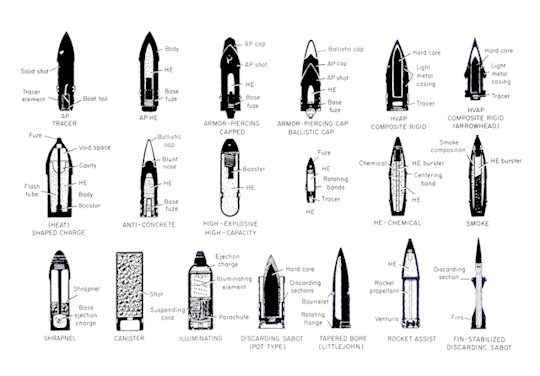
Types of shell
#AP-T#APHE#APC#APCBC#HVAP#HEAT#HEHC#APDS#APFSDS#shrapnel#canister#illumination#smoke#HE#HEC#shell#tracer
14 notes
·
View notes
Text
Another interesting term from Arknights is the way the word "Fortcracker" is used.
As in Fortcracker Arrows and Fortcracker Shells, according to Toddifons and Bagpipe's tidbits, the former her own make of arrows, the latter permitted "Piledriver Spear" ammunition given only to those who have a high enough clearance level, or have passed and become official Victorian Royal Guards.
Piledriver Spears are Royal Guard weapons that are suppose to have "Ranged" functions, but since Bagpipe is a freaky she removed it and went all melee. And she got the shells when she first graduated, so way before she took out the Ranged Function of the Piledriver Spear. So could that mean Fortcracker Ammunition is ranged? But it could also mean they're melee applicable then?
If so, the Fortcrackers is something most likely along the lines of what we would call "Armor Piercing" ammunition, not Anti-Armor, as they already use the term for rocket launchers, and most importantly they don't have tanks that would spur such development in the first place, so maybe there were other armored mobile platforms? Hell, they have canon Surface to Air missiles, so why is Fortcracker a specially named thing instead of just a 1 to 1 Armor Piercing?
I mean, the closest canon thing we saw to a mobile, heavy armored, heavy ordinance platform is the Steam Knights as well the more RECENT tank like constructs from Chapter 11, and well... they're respectively glorified steampunk mech and glorified steampunk missile vehicle respectively. And the latter isn't even a proper missile, but a FS Projectile.
In the real world, there's many forms of Armor piercing, there's AP, API, HEAP, APDS, APDSFS, APCBC and all the other abbreviations, of, notice the slant here, Armor Piercing ammunition for tanks. And there's only really one kind of Armor Piercing for Infantry Guns, not literally only one model, but you know what I mean.
So, keeping in mind although they don't have those Tanks to develop them for, there is still Armored Vehicles such as Jeeps, and Trucks. But those have "Anti-Armor" used against them, and not the "Fortcrackers" because they're Armored Vehicles. Which is a tad contradictory since they're the Armor Piercing Equivalents, so Fortcrackers SHOULD be used against Anti Armor.
So does that mean Fortcrackers are anti infantry armor and not armored vehicles? But the term Fortcracker must've come from the fact that they can, well, Crack Forts open. But how did it come to that if the Fortcrackers are named after piercing heavily armored stationary targets?
So a bunch of the question still stands, how did such names for ammunitions come to be? Why was it called Fortcracker and not just Armor Piercing, or Armor Shredding? And what are they exact equivalent of if they're not just renamed Armor Piercing rounds?
Maybe it's just a weird Victorian only thing? Since the times we've seen the term Fortcracker for is from Victoria and Victorians?
So many interesting questions to think about that I am unfortunately neither smart enough, nor informed about history's development on firearms to talk about.
I'd be interested in your thoughts though.
#arknights#Fortcracker#Arknights#Useless Lore Dump#Interesting how alternative history results in alternative words and slangs
24 notes
·
View notes
Text
Kinetic Energy-Magical Sniper Railgun*
KR-LV** "Karma"
That weapon is used only against the most dangerous, violent and serious enemies.
Without the modifications in the software of the on-board computer, you have to lock on the target and let the computer correct the position of the weapon before you shoot. That's necessary because this weapon is primarily used on tremendously long distances and even the smallest mistake could make the bullet miss the target.
Standart configuration:
Length: 175 cm \ 69 in. (nice)
Mass: 10 kg \ 22 lbs.
Caliber: 15х100 mm \ .60 RG
Bullet speed: 2500 m/s \ 5500 mph
Max theoretical shooting range: 25 km \ 15 miles
Clip capacity: 3 bullets, 2 MJ
Standart modules:
On-board computer
64x adjustable sniper scope
Subspace kinetic bipods, controlled by the on-board computer(4 pieces)
Heavy stock with the built-in recoil compensator
Ammo types:
Kinetic(K)
Armor-Piercing, Capped, Ballistic Cap(APCBC)
High-Explosive(HE)
Magical Explosive(ME)
High-Explosive Armor-Piercing(HEAP)
Magical Armor-Piercing(MAP)
EMP-Plasma(EMPP)
Magical Plasma(MPW)
Project "Comet"(MIPT)
Project "Radiant"(EDPW)
Project "ERASE"(AMAW)
* Kinetic Energy-Magical Sniper Railgun - a type of the sniper railguns that uses telekinesis to accelerate the bullets.
* KR-LV - Kinetic Railgun 55.
Acronym "KR" means "Karmic Retribution". Acronym "LV" means "Level of Violence". Together they mean "Karmic Retribution for your Level of Violence".

#undertale#undertaleau#undertale au#au#underfill#scifi#sci fi#sciencefiction#science fiction#scifantasy#sci fantasy#sciencefantasy#science fantasy#weapons#magic weapons#energy weapons
4 notes
·
View notes
Note
Which tanks frontal armor will the 76mm defeat? (KV-1, IS-1, IS-2, IS-3, Panther, Tiger I, Tiger II)
Since you didn’t specify which gun I’m going to assume you’re talking about the M1 76.
At point blank the M1 76′s HVAP can penetrate the Tiger II’s turret, Panther’s hull and turret, IS-2′s hull and turret, KV-1 and Tiger I at any spot. It would struggle with the IS-3 and Tiger II hull and could probably penetrate the turret of the IS-3.The round penetrates 220-230mm at point blank.
APCBC will struggle with everything excluding Tiger I hull/turret, Panther Turret, IS-1 hull/turret.
At a distance of more than 500m the IS-3 and Tiger II are more or less invulnerable by penetration, but that doesn’t mean they’re fully protected from spalling.
3 notes
·
View notes
Text

So how many rounds are available for US armored fighting vehicle in WW2? Up until 1945, these are several of the rounds shipped to both PTO and ETO to be used by the AFV in both sides of the conflict. Also included is a brief explanation of the cartridge featured in this picture:
(1 and 2) 37×223mmSR
Originally started as the defacto main gun round for the American tank pre-WW2, they were mostly used by the Stuart/Honey light tank, as well as M6 Gun Motor Carriage (Tank destroyer Jeep), M8 Greyhound scout car, and the previous M3 Lee/Grant. These rounds averagely weighed at 3 pounds with the projectile weighed 1.58 / 0.87 (APCBC-T M51 and Canister M2). The projectile were fitted on the brass casing designated as "Cartridge case M16".
(3 and 4) 57×441mmR
This round were already available for use in the British army as 6 pounder round, but when the 6pdr anti-tank gun were manufactured under license by USA, these round were designated as "57mm" round in general to differentiate the British to US cartridges in term of nomenclature. No American tanks or other AFV mounted the gun that fired this caliber, but these were shipped to ETO and PTO to supply the 57mm M1 anti-tank guns that was widely used in the conflict.
(5, 6, and 7) 75x350mmR
This cartridge already existed before in 1897, used by the French Canon de 75 modèle 1897. These rounds became the next defacto main gun round for American tanks when the M3 Lee, and later the more widespread M4 Sherman were introduced. Weighed less than 7 kilogram, the round is valued for the versatility and variety of round that the 75mm M2 to M6 gun series could fire, ranging from High explosive round, WP round, Canister round, and AP round. Aside from the Sherman, these rounds were also used by the M3 Gun Motor carriage (Halftrack with 75mm gun) and the m24 Chaffee light tank.
(9 and 10) 76.2x585mmR
Commonly referred as "3 inch" round, this cartridge is mostly used by one type of vehicle, the M10 Tank destroyer. This round was previously used as anti-aircraft round back in WW1. Just like many 76mm projectile used by British and Russian, the 76.2mm was considered as standard caliber for anti-aircraft artillery back then, but when its role in AA was obsolete, the projectile was deemed more than enough to perform as Anti-tank round.
(8) 76.2×539mmR
Unlike most rounds of this time that was repurposed-developed from the Naval or anti-aircraft usage, the 76mm round was developed for tank use from the beginning. It uses the same 76.2mm projectile as the previous "3 inch" 76.2 x 585mmR but the propellant casing is different, featuring more longer and streamlined profile instead of tapered casing used by the "3 inch". They were first introduced for the M18 Hellcat, and later to the M4 Sherman that mounted the larger T23 turret. Weighing around 6 kilogram (10 kilogram if it's HE), the round were considered near-equivalent to the British 17 pdr in terms of penetration. It is deliberately labelled as "76mm" even though it's the same projectile as the 3 inch, as this was done to differentiate both rounds apart.
(11) 90×830mmR
The 90mm cartridge is the last and the defacto tank gun rounds used by the American tank starting late-1944 to the end of the war. These rounds were already available for use previously by the 90mm M1 anti-aircraft gun. These round weighed averagely around 19 kilogram, and the performance of this round is near-exact equivalent to the German 88 × 571mmR fired by Tiger 1. The first vehicle to use this gun was the M36 Gun Motor Carriage, before the M26 Pershing was introduced. This round set the standard for future tanks and vehicle in service, where the cartridge continues to be the main gun round for American tanks (albeit with slight modification to the cartridge's shoulder later on to achieve greater chamber pressure) until the introduction of the 105mm M68 tank gun on the M60 tank.
When you look at how much ammunition are used and shipped by the logistic branch, these rounds already strained the supply (not counting artillery). This post doesn't cover other rounds used by other vehicle such as the 75mm and 105mm Howitzer used by the M8 Scott and Sherman Assault gun, but these rounds deserve its own post.
3 notes
·
View notes
Photo

Applejack braced herself as the M4A4 Sherman Firefly rocked from the recoil of the 17pdr gun firing. The mare steadied herself and observed through her binoculars the APCBC round punch through another enemy vehicle setting it ablaze.
"Good shooting everypony!" AJ called out on the intercom. "That appears ta be the last of them fer the moment! Big Mac how's we a doing on shells?"
"Um sis. We're a gitting low on AP. We might want ta top off soon." The sound of her big brother's voice can through on the intercom.
"I'm ah sure liking these new AP rounds sis!" Applebloom chimed in. "I know Big Mac thinks there a pain ta load." As if to emphasis this fact AJ started hearing the clanking of a spent 17pdr shell casings being pitched out of the turret by Big Mac. "But that APCBC round goes through their armor like a hot knife through a butter!"
"Hey cuz!" Babs spoke up between gum chewing. "The Apple Corer is getting a bit low on hooch! We might wanna pull back and fill up. Besides that way Big Mac and AB kin git a reload for the gun!"
"An ah I'd sure would appreechate ta git ta stretch these old legs out!" Hollered Granny Smith from the bow machine gun position. Beside I'm ah running low on bullets fer my peashooter!"
"Alright, alright everypony! Lets pull back an git topped off then." As she said this AJ climbed into the turret through the commanders cupola. "Alright Babs let roll out!"
This is a commission for Liam. He wanted me to draw Applejack as Kay of Saunders University High School. from the anime Girls und Panzers. However the story above is what popped into my head as I worked on this commission.
Yes the Firefly was a primarily a version of the Sherman used by the British in WWII, but it makes for an amusing picture.
Edit. It has been correctly pointed out that the Firefly didn't have a bow machine gunner to it. So that's an Oops! on my part. That or it's a special export variant for Equestria only.
This Saturday 10/26/19 starting at 5:30pm Pacific I am streaming on Picarto.
42 notes
·
View notes
Photo
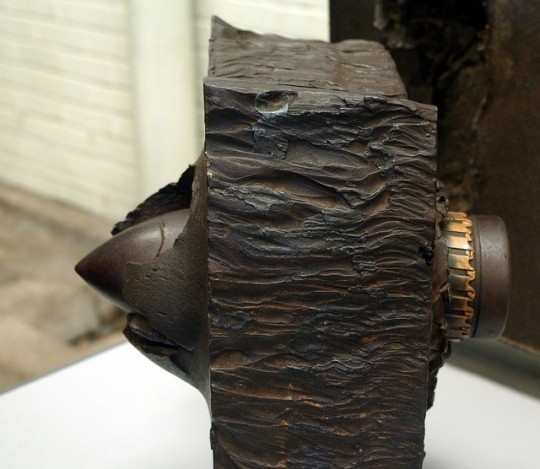
17 pounder APCBC round in the frontal armor of a Tiger 1 tank.
12 notes
·
View notes
Photo

RT @hobbysearch_mm: 【入荷】 1/1 8.8cm Pzgr.39/43 (APCBC-HE) L71 徹甲弾 ティーガーII用 PIG MODEL(ピッグモデル) 入荷です!→ https://t.co/Gxe1PbBIMQ ティーガーIIで使用された8.8cmPzgr.39/43(APCBC-HE)L71徹甲弾を1/1スケールで再現しています。 #プラモデル #プラモ #Plastickits #Plasticmodel #Scalemodel https://t.co/LVnYA4D8Im
0 notes
Text
Me: *puts two 90mm APCBC shells through the front of a Ferdinand*
Ferdinand: *still somehow moving, kills me in one shot through the front armor*
I see War Thunder has never changed
15 notes
·
View notes
Text
[WT] M4 Sherman Jumbo Revisited

After 1.87, some tanks have gotten either a BR increase or a decrease. America got the worst of it, with most of their heavies getting uptiered, including the Jumbos and the T30 series. For the T30 series, they aren't affected much as they can face the higher tier vehicles (except for some, but the 100-120mm guns can offer great penetration still.)
As for the Jumbo, they haven't been getting the best of it. Both variants (the 75mm and the 76mm) have been uptiered to 5.0 and 5.7 respectively, and now they face tanks at a higher BR. The 76mm Jumbo is decent at 5.7, but the 75mm Jumbo suffers even more. In my previous review, I talked about how the gun has so-so penetration at its tier, because it's the same 75mm gun as the regular Sherman, but now chances of getting a good pen are less, primarily because most of the tanks at 5.0 have better armor.
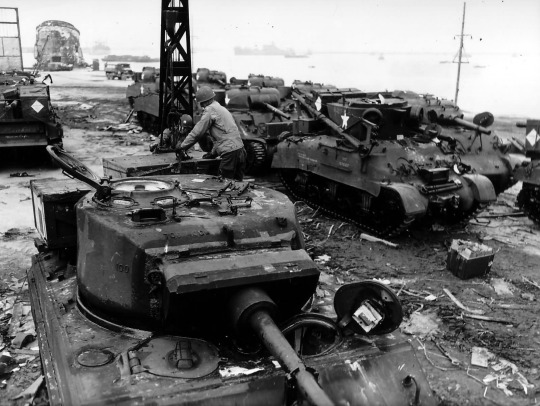
Jumbos in France
Basically the Jumbo is still the same, as it being a regular Sherman with more armor welded on top. It still has around 100mm of front armor protection at an angle of 47 degrees, so it's not your average Sherman. In my previous review, I talked about how the Jumbo was already underpowered at 4.7, so it's not any new to it that it's not gonna pen most of the tanks it faces. The Jumbo hasn't gotten any different with it's engine and transmission, and it still has the same mobility as it did before.
Here's some general info on the Jumbo, if you haven't seen already.
Armor
Upper front hull - 101.6mm of armor at 47 degrees
Lower front hull - 114.3mm of armor at 7-66 degrees
Sides - 76mm at 90 degrees
Turret front - 152mm of armor at 0-52 degrees
Turret sides - 152mm of armor at 4-42 degrees
Gun mantlet - 177.8mm of armor at 4-60 degrees
Mobility
Weight - 37.8 tons
Max speed (km/h) - 35-38 km/h
Horsepower - (AB) 646 stock, 796 upgraded
Horsepower - (RB) 442 stock, 500 upgraded
Ammunition
M72 shot - AP shell - 109mm of penetration at 100m
M61 shot - APCBC shell - 88mm of penetration at 100m - 64.7 grams of TNT equivalent
T45 shot - APCR shell - 137mm of penetration at 100m

In total, the Sherman Jumbo has just gotten a BR increase. Although that might not seem like much, it affects the way it should be played. Before, it can usually take hits from lower-velocity shells, but now chances of going against Tiger Is and T-34-85s are increased. Some of these guns can punch through your front armor if they get close enough, so it's best you try not staying exposed. Another thing to note is the trap-shot between the gun mantlet and the roof of the upper hull, but the chances of that happening are low (although it has happened to me in the past.) Other than that, it's best that you flank the enemy instead, and if you angle your side just a little bit, it can ricochet shells really well.
0 notes
Photo
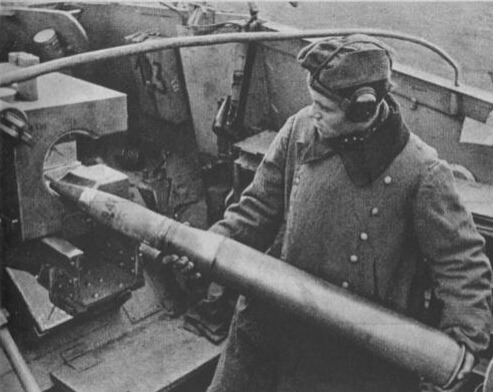
A artilleryman with a Panzergranate 39 APCBC (Armor Piercing Capped Ballistic Cap) for the gun 8.8cm KwК 43 L / 71 gun that her Panzerjäger (tank hunters) “Nashorn”.
#ww2#wwii#ww2 history#ww2 tanks#tank hunter#tank destroyer#nashorn#hornisse#88mm gun#8.8cm gun#43 l/71#panzer iv#panzer division#self-propelled gun#anti tank#panzergranate#shell#artillery
5 notes
·
View notes
Photo
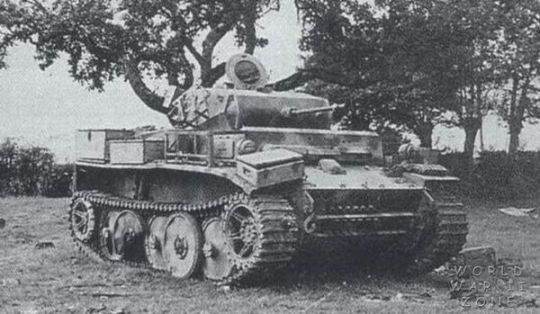

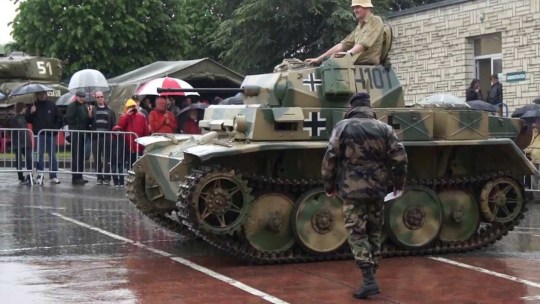
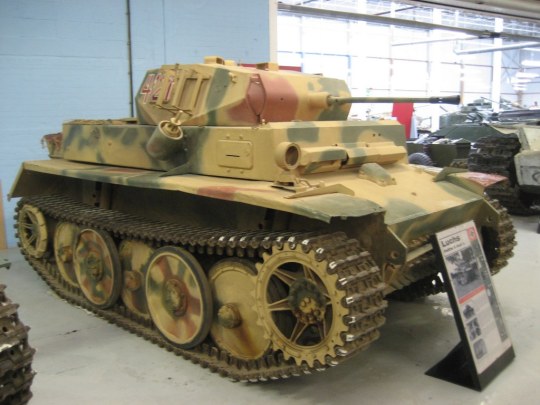

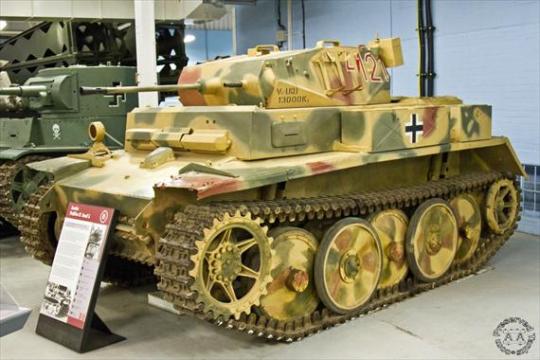

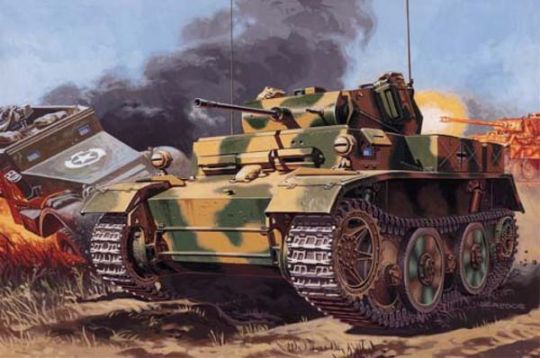


Panzerspaehwagen II Ausf L Luchs (Lynx) – Sd.Kfz.123 (VK 1303)
Information about the vehicle
N/A
General specifications
Type: Light Tank/Reconnaissance Vehicle
Crew: 4; Commander, Gunner, Driver, Radio-operator
Communications:
Weight: 11.8 tonnes Length: 4.63m
Width: 2.48m Height: 2.21m
Suspension:
Transmission:
Power-plant: 180hp 6-cylinder Maybach HL66P engine
Fuel Capacity: 235 liters ( 62 US liquid gallon; 51 Imperial gallons)
Speed: Road: 60 km/h/Cross-country: 42 km/h
Operational range: Road: 290 km/Cross-country: 175 km
Introduced:
Production Period: September 1943 – January 1944
Number built: 100-104
Place of origin: Nazi Germany
Operators: Nazi Germany, Kingdom of Bulgaria, Slovak Republic, and Norway (Leftovers)
Armament and Ammunition
Main armament
1 x 20mm KwK 38 L/55 (320-330 rounds)
Secondary armament
1 x 7.92 Maschinengewehr 34 (MG 34) (2,250-2,280 rounds)
Ammunition Type
Panzergranate 39
(Pzgr.39 (APCBC) – Armor Piercing Composite Ballistic Cap)
Panzergranate 40
(Pzgr.40 (APCR) – Armor Piercing Composite Rigid (Tungsten Core))
Armor
Turret:
Hull:
Superstructure:
Armor type:
(Information sources: 1, 2) (Source of images) (Video source)
2 notes
·
View notes
Text
Well it’s been quite the ride since 2013 and after a while I’ve finally reached 7,500 followers.
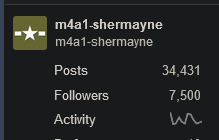
So for the hell of it today I will teach you about the M3 75mm gun and it’s uses.
First off I want you to forget about the whole Tiger/Sherman and Panther/Sherman debate for a moment and focus on the primary reason the tank was created in the first place: Infantry support and breaking through defensive lines.
The M3 it’s self finds it’s roots going back to a French Cannon known as the Canon de 75 mm Modele 1897 which was widely regarded as the first modern artillery piece at it’s introduction during the end of the 19th century.
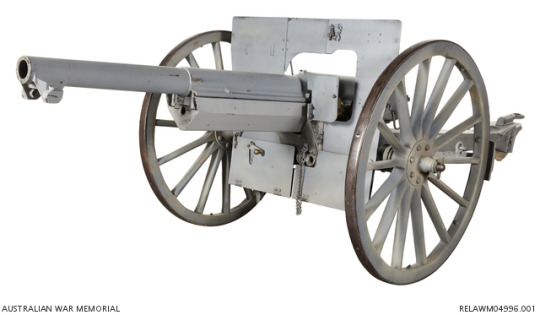
Now you might be thinking “woah Sherm what does this have to do with a tank cannon from the 40s” well, everything! The biggest reason the Modele 1897 was so popular was due to it’s HE and timed shrapnel shells, infact it was popular enough that the French had several thousand still in service before the German invasion of 1940.
The Modele 1897 was used on a handful of other vehicles during the First World War including the Char Saint-Chamond.

The French and other nations also mounted these vehicles on trucks and used T30 shrapnel shells for Anti-Aircraft duty.
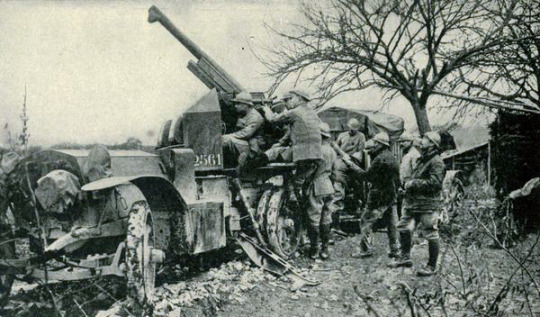

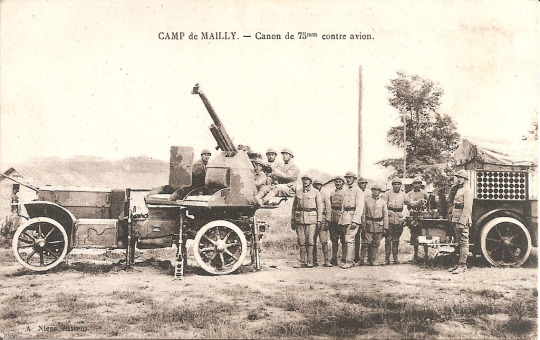
The US obtained numerous weapons during World War One including tanks and planes, they began using them during their time in Europe, Renaming the Modele 1897 to the 75 mm Gun M1897, the US was so fond of these guns that close to 2,000 of them were on the field in US service when the War ended in November 1918.
US production rates of the M1897 reached 1,000 total, but only a handful of those guns in particular got to Europe before the war ended. Which means they ended up with a large surplus of US made M1987s. Development of the M1897 led to an experimental anti-aircraft gun known as the T6. The barrel was shortened by 5 calibers from 36 to 31 and Nordenfelt screw breech replaced with the sliding block breech.
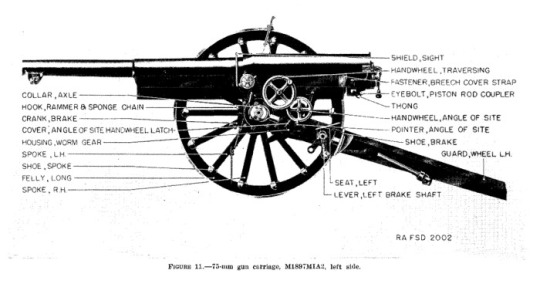

The time between 1918 and 1939 was great for weapon tech, from Biplanes to Monoplanes, from Carriers becoming a lethal and key capital ship in Naval warfare, to the smallest but fastest armored vehicles. The US had spent it’s time quite wisely building up and researching technology that would but it’s self into a relative sweet spot by the time the next Major conflict would arrive.
The M1897 would undergo modernization in the hands of all who used it, The French built the later M1897A2 and M1897A3 models while the M1897A4 would be built in US factories. The A4 model consists of the removal of rollers and sweeper plates with felt pads, and elimination of a portion of the jacket of the gun which is replaced by steel rails and bronze strips attached to supports on the gun.
The German invasion of France in 1940 caught the attention of the Americans, they looked into what made them so effective. One of the notes they made was the use of self propelled artillery. When looking at their own arsenal it was made apparent that the United States lacked vehicles that could fulfill such a role.
Debate and discussion followed and eventually it was decided to mount the M1897A5 onto the new and upcoming Half Tracks. Using the M3 and M5 half tracks the gun would be mounted and used in numerous roles such as Anti Tank and Indirect Artillery Support.


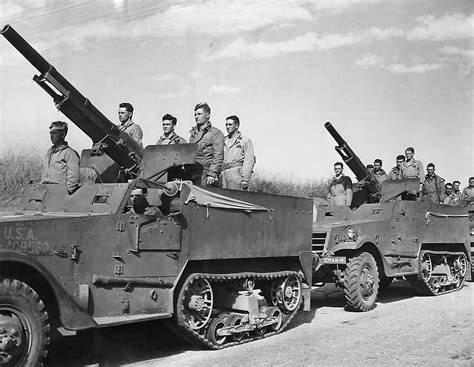
Known as the T12 or M3 GMC (Gun Motor Carriage) this vehicle would be sent to North Africa along with Operation Torch and find it’s self neck deep in German/Italian Tanks. However technology had moved too quickly and due to the fact the weapon was mounted on a half track and not a heavier vehicle, losses weren’t exactly minimal for the M3 GMC. Eventually the M3 would be replaced by the heavier M10 Wolverine, but that doesn’t exactly mean the M1897 was to be taken out of service.
At a similar time the M3 Lee was being produced as a stopgap for the problems US manufacturers were facing with the up coming M4 Medium. The War Department noticed the all purposeness of the M1897 and decided to develop it a bit further. The M1897 was shortened and adapted to the role of Anti Tank.


The gun would be known as the M2 75mm and it would arm all Lee/Grant tanks and during their time in North Africa they showed promise, but as time goes on technology always advances and being a stop gap doesn’t exactly mean time is on your side. However the T7/M2 would be used briefly on the Sherman.

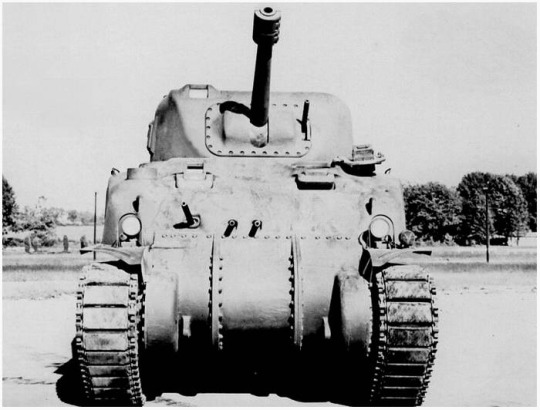
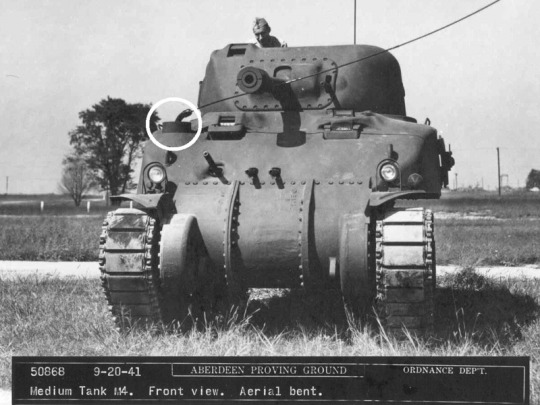
The T6 was the first Sherman prototype, armed with the T7/M2 and boasting four .30 caliber machine guns, it had a handful of features that it would share with the Lee which would be eventually removed such as the side hull door. It should also be noted that the Lee’s hull door had periscopes embedded in it, the T6 prototype did not. Also the white circle is to bring attention to the fact the antenna was getting caught by the gun.
Eventually the M2 would be refined into the M3 which would feature a lengthened barrel and not much difference.
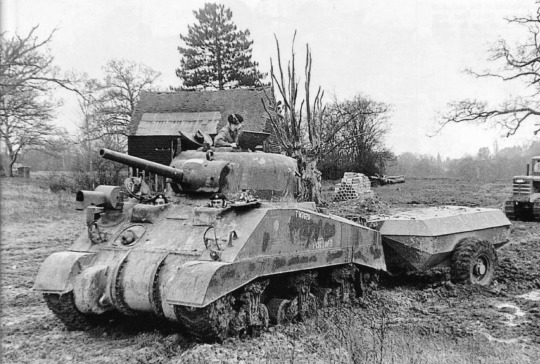
The M3 was highly praised for it’s High Explosive capabilities and Armor Piercing capabilities in the North African desert. But of course as the story goes when moving through Italy and France the M3 struggled against heavily armored targets. But it wasn’t exactly the gun’s fault.

First off, it should be noted that Shermans were not designed to engage heavy vehicles. That was the job of the tank destroyer units that stuck around. Just like it wouldn’t be the job of the tank destroyer to push heavily fortified areas.
Second, a certain individual is to blame for the inefficiency of the M3 75′s AP capabilities; General Lesley McNair. There are numerous types of munitions that these guns use, but the ones in question would be the M72 AP and M61 APCBC shot. The capabilities of the M61 APCBC shot had enough to punch through the Tiger at close distance and enough to punch through the sides at at least 500 meters. However due to McNair’s orders the M61 wasn’t issued to troops while the inferior M72 was in fact issued. McNair believed that Tanks were not the best way to fight tanks.
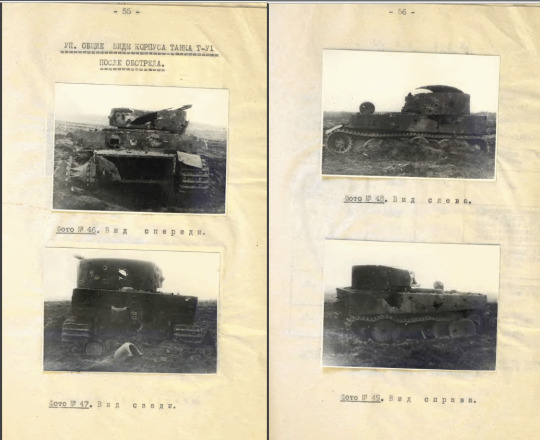
This is a USSR Archival photo of testing against a Tiger tank. The USSR tested virtually every type of ammunition to determine the capabilities against it. They found that the Sherman was more than capable of killing one if the proper measures were taken.
But nevertheless, the M3 turned out to be an amazing gun for infantry support and bunker busting. Infact the Army was so thrilled by the HE capabilities it was having a tough time switching the M3 out for the M1 76mm which had better AP but worse HE.
There are two other version of the M1897 I’d like to mention before finishing off. The M5 and the M6.
Attacking ships is serious business. They’re usually filled to the brim with anti aircraft guns so you’re usually forced to use rockets, bombs or torpedoes. But the US loves it’s kinetic action.


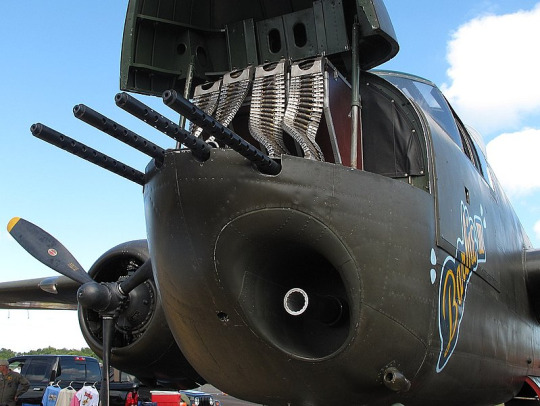
Lightened and stuck into the nose of PBJs and B-25s, the M5 was fitted with a automatic reloading mechanism which allowed it to be used more than once.


The M6 is based on the M5 and used in the M24 Chaffee which was a very potent light tank when comparing it to the M3 or M5 light tanks.
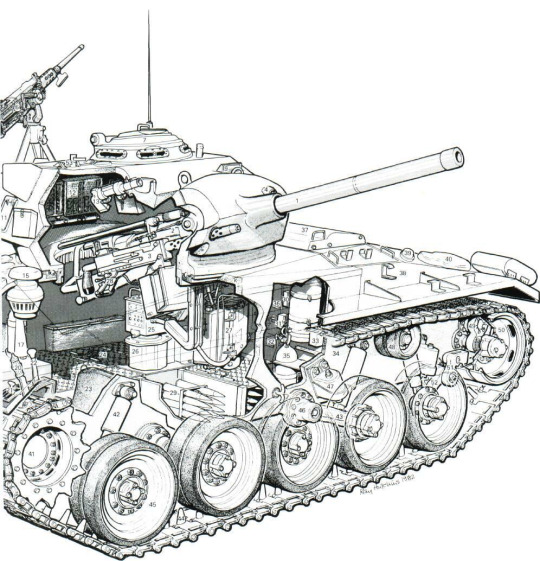

Couple final notes. All major version of the gun could use the same ammunition.
The ammunition included:
M72 APC

M61 APCBC

M48 HE

M66 HEAT
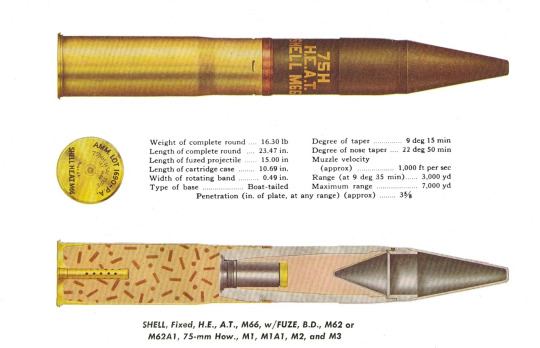
M89 Smoke
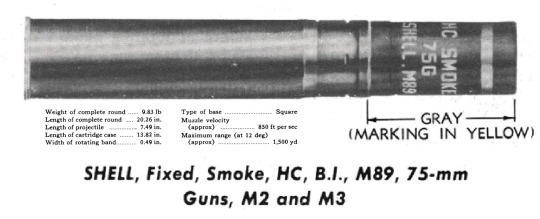
M64 White Phosphorus

Other rounds such as HVAP and Shrapnel were also developed.Crews would typically take 50% HE, 40% AP, and 10% Smoke/WP.
The last thing i’d like to mention is that France still uses two M1897 guns for ceremonial purposes.
Thanks for sticking around, I don’t really post tanks that much anymore but I’ll try to change that.
339 notes
·
View notes
Video
youtube
Destroy the enemy tank Kpz 70 Using the Russian tank T 10M ( APCBC ) she...
0 notes
Video
youtube
What is LITTLEJOHN ADAPTOR? What does LITTLEJOHN ADAPTOR mean? LITTLEJOHN ADAPTOR meaning - LITTLEJOHN ADAPTOR definition - LITTLEJOHN ADAPTOR explanation. Source: Wikipedia.org article, adapted under http://ift.tt/yjiNZw license. The Littlejohn adaptor was a device that could be added to the British QF 2 pounder (40 mm) anti-tank gun. It was used to extend the service life of the 2-pounder during the Second World War by converting it to squeeze bore operation. "Littlejohn" came from the literal anglicization of the name of František Janeček, the Czech designer and factory owner who had been working on the squeeze-bore principle in the 1930s and his son František Karel Janeček had brought his know-how to Britain after he fled from the German-occupied Czechoslovakia. The adaptor took the form of a reducing bore that was screwed on to the end of the gun. This was coupled with a round formed from a hard core (tungsten) inside a softer metal casing - the armour-piercing, composite non-rigid (APCNR) design. The round upon firing travelled the first part of the bore as normal, but on entering the tapering portion the softer and malleable metal of the outer shell of the round was compressed - from 40 mm to approximately 30 mm. The round when it emerged from the adaptor now had a smaller cross-section than before. Together with the higher driving pressure developed in the barrel of diminishing internal volume compared to standard cylindrical bore, the APCNR round, called APSV (from armour-piercing super velocity), travelled faster, over a flatter trajectory. The Littlejohn adaptor/APCNR combination gave the 2 pounder a similar effect as the APDS round used with the much larger and heavier QF 6 pounder gun. The muzzle velocity of the APSV Mark II shell was 1,143 m/s compared with the 792 m/s of the normal 1.2 kg APCBC shell. The lighter Mark I APSV shell was capable of penetrating 88 mm of armour at 450 m at a 30-degree angle of impact. In 1942 US Ordnance tested the Littlejohn adaptor in an attempt to develop a taper bore adaptor for the 37 mm Gun M3. The adaptor distorted after a few shots. The adaptor was chiefly used on British armoured cars e.g. the Daimler which had been designed and built earlier in the war and could not be readily fitted with a larger gun. As an adaptor to the existing gun could be removed so that normal rounds could be fired, this offered increased anti-armour effect but with obvious drawbacks in combat conditions. When crews discovered the special 'squeeze bore' ammunition was more effective than the standard 2pdr AT round even when not 'squeezed' in practice the adaptors tended to be stored rather than fitted. It was also experimentally fitted to the Vickers 40mm S Gun fitted to the Hawker Hurricane IID anti-armour variant (see photo). As Anthony G Williams concludes in The Cartridge Researcher, the official bulletin of the European Cartridge Research Association (February 1999): the gun/ammunition combination did not function with sufficient reliability. As stated in the above-mentioned article on the Vickers S Gun states: Tests in the Far East showed a high level of accuracy, with an average of 25% of shots fired at tanks striking the target attacks with HE were twice as accurate as with AP, possibly because the ballistics were a closer match to the .303 in (7.7 mm) Browning machine guns used for sighting.
0 notes
Text
[WT] M4 Sherman Review

The M4 Sherman. It's one of those really controversial tanks that everybody either talks crap about, or they talk positive about it. I understand it. On paper, it might seem like a really bad tank, but so many people forget why the Sherman was designed and built in the first place.
https://youtu.be/Z2vL9ObWw8c
I made this history video about the Sherman a few weeks ago, and its purpose of existence is straightfoward. It was made to be built in huge numbers to outnumber the German army. Since I already have a video about the Sherman that you can watch, I'll just provide you an outline of its history over here.
Basically after the German blitzkrieg in 1939, the British forces were in desperate need for a better tank. The US Army Ordnance Committee was given the task to design something better than the aging M2 design, and in the end they came up with the M4 Sherman. (The M3 was created as a stopgap prior to M4 Sherman production because of planning delays). The Shermans were equipped with a 75mm gun, and they were sent over to Africa first to fight the German forces there.
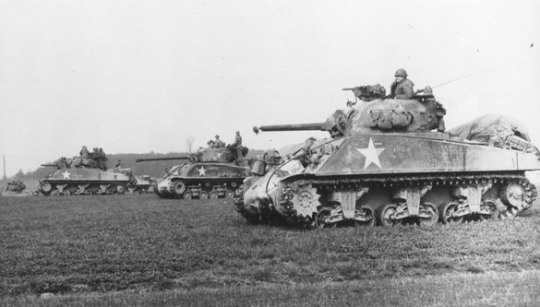
Shermans in Europe
Soon, it was proven that the Sherman could pack a punch. It was designed to support the infantry, and it would later fight off until the end of the war.
In War Thunder, you can play the M4 Sherman at the 3.7 BR. It is a researchable tank, right after the M4A1, which is the cast hull brother of the welded Sherman. They're both similar, but I will just talk about the M4 Sherman today. So don't get confused.

M4 Jumbo that I reviewed a few months ago
The main 75mm gun on the M4 Sherman can penetrate most of the tanks at its tier. The Panzer IIIs and the Panzer IVs are an easy target, and the T-34s can be one-shotted at its turret ring. The KV-1, SMK, and even the Shermans itself can be hard targets, as they have thicker armor that the 75mm gun may have trouble penetrating.
The shells that are provided include AP, APCBC, and HE. HE is nearly useless, so don't ever bring it out. I would recommend using APCBC most of the time, because it offers a great deal of destruction. It has 88mm of penetration, which is decent, but the HE filler inside the shell has 63.7 TNT equivalent, which is a very high value for a low tier tank. This shell will do most of the work, so I'd recommend bringing the APCBC out very often. AP can offer 109mm of penetration, but it's not as destructive as the APCBC.
The armor is pretty great at 3.7, which may surprise some players. The upper hull is angled at 56 degrees, offering 50mm of protection. The turret also has 76mm of protection, which is pretty good. Your sides are the biggest weak point, although. It's 90 degrees flat at 38.1mm, not to mention there are ammo racks on the side, so its not smart to have them exposed to the enemy at any time.
I love playing the Sherman. It can go around 25mph, making it a pretty mobile tank. The only weakness to its mobility is the reverse speed, so that is one thing to take note. The Sherman is better off as a hull-down tank, with its 10 degrees of gun depression. This is where it can be seen as a flanking tank, using its mobility as a way to take down enemies from their side. The shells it has can do some massive destruction, and the armor may surprise some people.
0 notes